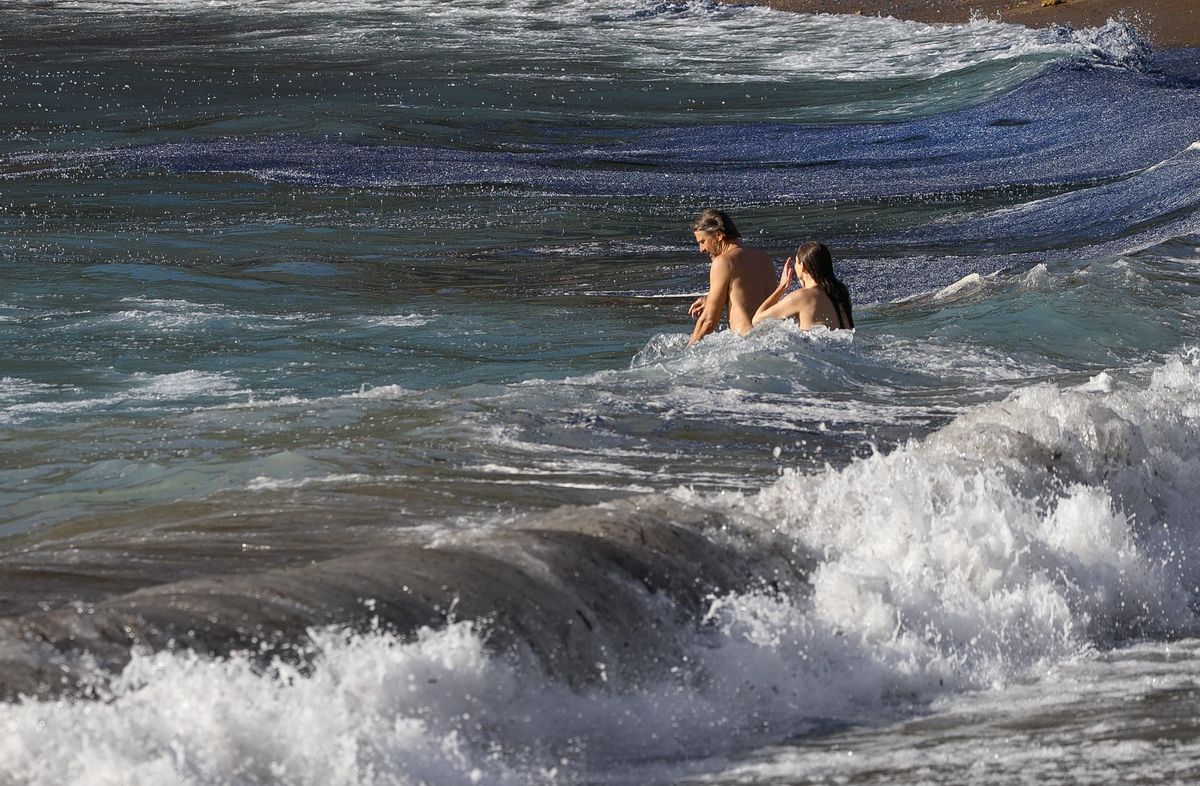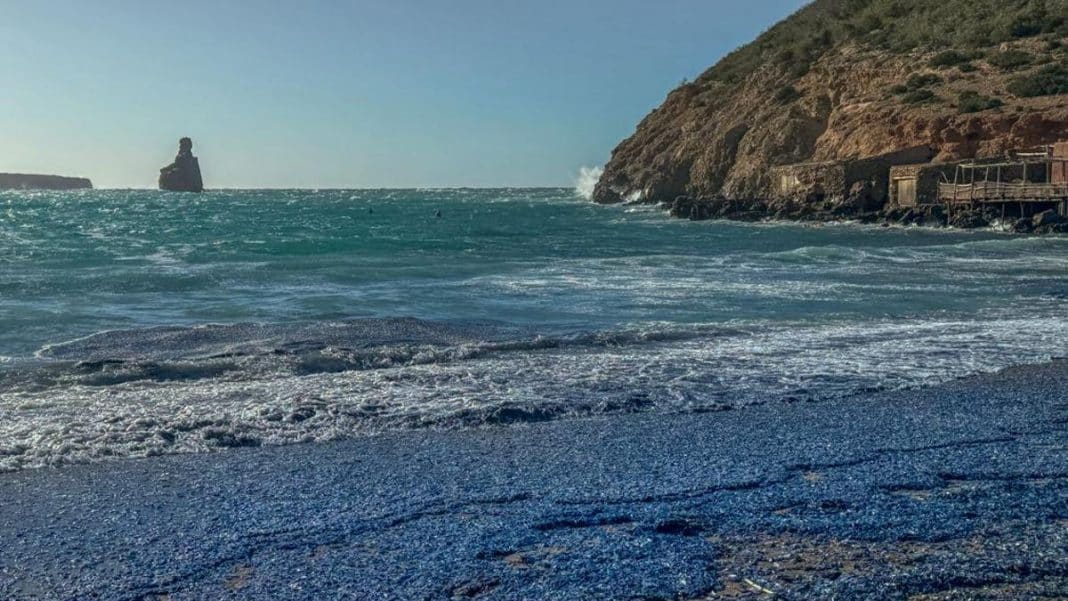Some parts of the coast of the island have dawned these days with a blue mantle. These are sailboat jellyfish ( Velella velella) also known as barquetes de Sant Pere. It is not the first time they arrive at the beaches of the island. On this occasion they have appeared, at least, in Benirràs and Punta Galera this weekend.
Yesterday, March 29, Benirràs was plagued by hundreds of thousands of sailboat jellyfish. “We freaked out with them,” says photographer Santi Tur, author of the images that accompany this information, also known on Instagram as @atfunk.
The change of season the jellyfish are not toxic and do not represent a danger to human beings, the sting only causes a slight reddening of the skin. The jellyfish are not toxic and do not represent a danger to humans, the sting only causes a slight reddening of the skin.

what is the sailboat jellyfish?
The sailboat jellyfish (Velella velella) is a pelagic surface-dwelling species highly prized by sea turtles. In fact, south of Formentera, the large concentrations of Velella velella on the high seas, caused by cyclonic gyres of surface waters, brings many loggerhead turtles (Caretta caretta), especially juveniles, to the area every year, as reported by Cristina Amanda Tur in an article published in the Sunday edition of Diario de Ibiza.

The boat of Sant Pere is not a jellyfish, but a a colony of floating hydrozoans, a siphonophore, which is characterized by the triangular crest that, like a sail, allows the wind to move it across the surface of the water. And although it is part of a habitat in which blue already predominates, its base stands out for a very intense tone, a lapis lazuli blue, especially when the individuals are stranded on the light sand. It is at this base, a kind of float with concentric air chambers, where the colony is found. It can reach a size of about eight centimeters, although, as a general rule, the specimens are usually somewhat smaller. In Catalonia and Catalan-speaking areas, as a final curiosity, this animal is known as the barqueta de Sant Pere because of the union of the appearance of the siphonophore and the relationship of St. Peter, the fisherman, with the sea. This link also explains the common name of the fish Zeus faber, the well-known gall de Sant Pere.
For the full article, please visit Diario de Ibiza website here.

